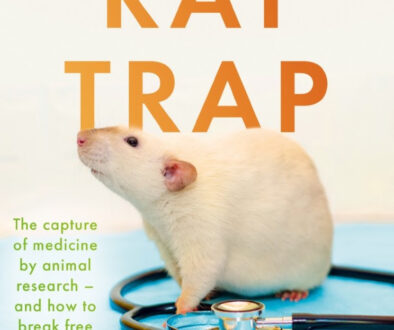To Jerzy Buzek about Bisphenol A
TO: Professor Jerzy Buzek, President, European Parliament
Dear Professor Buzek,
May I sincerely congratulate you on your new position as president of the European Parliament and may your term as president be a successful and fulfilling one. I am writing to you, not only as a concerned EU citizen, but as a fellow scientist. The fact that you are a chemical engineer by profession means that you are familiar with the problem of bisphenol A (BPA) and its effects on human health. You are also certainly aware of the close structural resemblance between BPA and another, more potent chemical, diethyl stilbestrol (DES), whose disastrous health consequences have been well documented.
Our organisation, Antidote Europe, would like to bring to your attention the sensible decision of the Canadian government in 2008 to declare BPA a dangerous substance and to ban it in baby bottles. Equally important, I would like to refer you to studies involving human data and developmental biology, which should be taken into account with respect to regulatory decision-making in the EU, in particular by the European Food Safety Authority (EFSA). These include BPA levels in human umbilical cord blood samples as well as other biological fluids, epidemiological studies and results obtained using toxicogenomics (see https://antidote-europe.eu/cp08jul09_gb.htm). Standard toxicological studies involving animal data and linear relationships are inappropriate when considering the effects of BPA in relation to the human foetus.
It is unfortunate that some sectors of industry and even some sectors of the regulatory apparatus choose to put human health at risk, on the basis of irrelevant or selective data. Antidote Europe, together with like-minded consumer and environmental protection organisations, succeeded in getting the concept of “toxicogenomics” included in theREACH regulations and approved by the Council of Ministers. Sadly, the EU still lags significantly behind the US in the application of toxicogenomics as an early screening tool to assess the toxic risk potential of the 100,000 chemicals in which we live today. The use of modern toxicology, in combination with the field of developmental biology, will continue to provide valuable information to health authorities concerning BPA. We trust that you will give your full consideration to this information with regard to the health of EU citizens.
Respectfully yours,
Claude Reiss PhD
President, Antidote Europe
Former departmental head at the French Centre National de Recherche Scientifique (CNRS)
Andre Menache MRCVS
Director, Antidote Europe
Veterinary surgeon
Antidote Europe is a non-profit association created by scientists and researchers working towards biomedical research methods that represent sound science.
References
1. http://www.hc-sc.gc.ca/ahc-asc/media/nr-cp/_2008/2008_167-eng.php 
2. Ikezuki Y et al. Hum Reprod 2002 Nov;17(11):2839-41. “Determination of bisphenol A concentrations in human biological fluids reveals significant early prenatal exposure”
3. vom Saal et al. Environ Res 2006 Jan, 100:50-76 “Large effects from small exposures. II. The importance of positive controls in low-dose research on bisphenol A”
4. Calafat AM et al. Environ Health Perspect 2005; 113: 391-5 “Urinary concentrations of bisphenol A and 4-nonylphenol in a human reference population.”
5. Takeuchi T et al. Endocr J, 2004;51:165-169. “Positive relationship between androgen and the endocrine disruptor, bisphenol A, in normal women and women with ovarian dysfunction”.
6. Ropero AB et al. Int J Androl, 2008;31(2):194-200 “Bisphenol-A disruption of the endocrine pancreas and blood glucose homeostasis”
7. Moriyama K et al. J Clin Endocrinol Metab, 2002;87:5185-5190 “Thyroid hormone action is disrupted by bisphenol A as an antagonist
8. Le HH et al. Toxicol Lett. 2008 Jan 30; 176(2):149-56 “Bisphenol A is released from polycarbonate drinking bottles and mimics the neurotoxic actions of estrogen in developing cerebellar neurons”.
9. Vandenberg LN et al. Bisphenol-A and the great divide : a review of controversies in the field of endocrine disruption. Endocr Rev. 2009 Feb; 30(1):75-95
10. Calafat AM et al. Exposure of the U.S. population to bisphenol A and 4-tertiary-octylphenol : 2003-2004. Environ Health Perspect. 2008 Jan;116(1):39-44
11. Myers JP et al. Why public health agencies cannot depend on good laboratory practices as a criterion for selecting data : the case of bisphenol A. Environ Health Perspect. 2009 Mar;117(3):309-15
12. Bouskine A, et al. 2009. Low Doses of Bisphenol A Promote Human Seminoma Cell Proliferation by Activating PKA and PKG via a Membrane G protein-coupled Estrogen Receptor Environ Health Perspect : doi : 10.1289/ehp.0800367.(Online 11 February 2009)
13. La Pensee EW et al. Bisphenol A at low nanomolar doses confers chemoresistance in estrogen receptor-&-positive and-negative breast cancer cells. Environmental Health Perspectives Volume 117, Number 2, February 2009
14. Hess-Wilson JK. Bisphenol A may reduce the efficacy of androgen deprivation therapy in prostate cancer. Cancer Causes Control DOI 10.1007/s10552-009-9337-8.
15. Lang IA, Galloway TS, Scarlett A; et al. Association of urinary bisphenol A concentration with medical disorders and laboratory abnormalities in adults. JAMA. 2008;300(11):1303-1310.
16. Wetherill YB, et al. In vitro molecular mechanisms of bisphenol A action. Reprod Toxicol. 2007;24(2):178-198.
17. Vandenberg LN, Hauser R, Marcus M, Olea N, Welshons WV. Human exposure to bisphenol A (BPA). Reprod Toxicol. 2007;24(2):139-177.
18. Stahlhut RW, et al. Concentrations of urinary phthalate metabolites are associated with increased waist circumference and insulin resistance in adult U.S. males. Environ Health Perspect. 2007;115(6):876-882.
19. Bindhumol V, et al. Bisphenol A induces reactive oxygen species generation in the liver of male rats. Toxicology. 2003;188(2-3):117-124.
20. Alonso-Magdalena P, et al. Pancreatic insulin content regulation by the estrogen receptor ER alpha. PLoS ONE. 2008;3(4):e2069.
21. Hugo ER, et al. Bisphenol A at environmentally relevant doses inhibits adiponectin release from human adipose tissue explants and adipocytes [published online August 14, 2008]. Environ Health Perspect. doi:10.1289/ehp.11537.
22. Welshons WV, et al. Large effects from small exposures, III: endocrine mechanisms mediating effects of bisphenol A at levels of human exposure. Endocrinology. 2006;147(6)(suppl):S56-S69.
23. vom Saal FS, et al. Bisphenol A expert panel consensus statement: integration of mechanisms, effects in animals and potential to impact human health at current levels of exposure. Reprod Toxicol. 2007;24(2):131-138.
24. Rapport d’analyse complet du National Toxicology Program sur le BPA
25. European Food Safety Authority. Opinion of the Scientific Panel on Food Additives, Flavourings, Processing Aids and Materials in Contact with Food on a request from the Commission related to 2,2-HYDROXYPHENYL”>BISPROPANE (Bisphenol A). EFSA J. 2006;428:1-76.
26. Statement of Norris Alderson. PhD, Associate Commissioner for Science, Food and Drug Administration, Department of Health and Human Services, before the Subcommittee on Commerce, Trade and Consumer Protection, Committee on Energy and Commerce, US House of Representatives. US Food and Drug Administration Web site. http://www.fda.gov/ola/2008/BPA061008.html  June .10, 2008. Accessed August 12, 2008.
June .10, 2008. Accessed August 12, 2008.
27. Lee DS, et al. Gamma glutamyl transferase and metabolic syndrome, cardiovascular disease, and mortality risk: the Framingham Heart Study. Arterioscler Thromb Vasc Biol. 2007;27(1):127-133.
28. vom Saal FS, Hughes C. An extensive new literature concerning low-dose effects of bisphenol A shows the need for a new risk assessment. Environ Health Perspect. 2005;113(8):926-933. ISI | PUBMED
29. Michaels D. Doubt Is Their Product: How Industry’s Assault on Science Threatens Your Health. New York, NY: Oxford University Press; 2008.
30. De Ferranti SD, Osganian SK. Epidemiology of paediatric metabolic syndrome and type 2 diabetes mellitus. Diab Vasc Dis Res. 2007;4(4):285-296.
31. Newbold RR, et al. Effects of endocrine disruptors on obesity. Int J Androl. 2008;31(2):201-208.
32. Prins GS, et al. Developmental estrogen exposures predispose to prostate carcinogenesis with aging. Reprod Toxicol. 2007;23(3):374-382.
33. Anastas PT, Beach ES. Green chemistry: the emergence of a transformative framework. Green Chem Let Rev. 2007;1(1):9-24.
34. Buterin T., Koch C. &H Naegeli, Convergent transcription profiles induced by endogenous estrogen and distinct xenoestrogens in breast cancer cells Carcinogenesis2006, 27 : 1567-78.
35. Evaluation de la toxicité de 28 substances chimiques de synthèse (resultats d’analyses toxicogénomique menées par Antidote Europe)
36. Beronius A et al. Regul Toxicol Pharmacol. 2009 Jun 13. “Health risk assessment procedures for endocrine disrupting compounds within different regulatory frameworks in the European Union”


